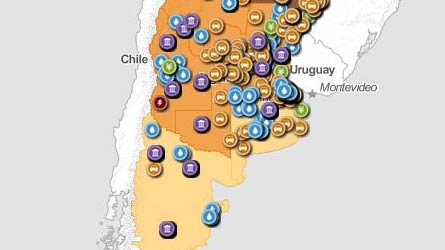CHALLENGE
Following the economic crisis in 2002, Argentina faced the challenge of securing sustainable long-term growth for equitable economic and social development while also supporting greater social expenditure, assisting in employment creation, and enhancing living conditions. These issues required effective governance, strong institutions, and efficient and transparent management of public policy. In the past, ANSES, the administrative pillar of the social security system which manages and pays Argentina’s social security benefits, had faced important management, efficiency and transparency challenges.
Through the "National Pension Administration Technical Assistance Loan" (ANSES I) (US$ 20 million), initiated in 1997, the Bank provided support to the agency in areas including fraud and error control, provincial pension fund transfer, improvement of client service quality, and institutional strengthening. While significant institutional reforms which increased ANSES’s management capacity and improved perceptions of the social security administration had been undertaken, important efficiency and transparency challenges remained.
SOLUTION
The ANSES II project was designed to build off of these past efforts, and was seen as a means to enhance public sector management by focusing on a key service delivery agency, while also building demonstration and multiplication effects to replicate similar institutional strengthening initiatives elsewhere. The project responded to government demand, and was designed to address institutional effectiveness, transparency and participation, and change management, with a clear link between project objectives and ANSES’s institutional strategy.
The operation contributed to enhanced service-delivery by ANSES through the reengineering and automation of core business processes, integration of systems, improved organizational structure and decentralized service delivery, strengthening of strategic management tools, and necessary enabling mechanisms to support these changes.
RESULTS
ANSES II resulted in important developments:
- Beneficiaries’ satisfaction rates with service delivery increased from 45 percent in 2005 to 86.2 percent in 2012.
- The average amount of time for the provision of new benefits was substantially reduced over project implementation, falling from 140 days in 2005 to 74 days in 2012.
- The amount of time in the provision of death benefits was significantly reduced. In 2005, processing took 60 days by phone and 170 days by attending a service center. By 2012, processing took 5 days via web services (which replaced phone services) and 66 days at service centers.
- To improve its change management capabilities, ANSES installed management and M&E systems, and defined and adopted a communications strategy.
WORLD BANK GROUP CONTRIBUTION
The IBRD contributed $18.05 million in a technical assistance loan to the project. ANSES II built upon a series of past projects supporting the deepening of public sector reforms, including approximately $1.88 billion in relevant IBRD projects and $1.3 billion in relevant IDB projects. Among others, these IBRD projects included the National Pension Administration Technical Assistance Loan (ANSES I, P046821).
PARTNERS
The counterpart contributed $8.836 million to the project.
MOVING FORWARD
ANSES I and II helped to transform ANSES into a more customer-centered, effective, and efficient institution. Delivery of social services in Argentina will benefit from the project’s legacies of faster social security benefit provision, more accurate reporting, restructured institutions and processes, and increased transparency and access to information. While there are no immediate plans for further World Bank support, several initiatives are expected to be maintained and further institutionalized by ANSES, including, among others, consolidating support to ERP implementation; incorporating additional human resources for the completion of the digitalization process of the physical archive; and further developing the e-learning platform.
BENEFICIARIES
By improving management of social programs administered by ANSES, ANSES II has contributed to improving the quality of life of vulnerable sectors of the population - such as the elderly and social security beneficiaries - by enhancing their access to and the quality of service-delivery. The project has strengthened beneficiary participation through a variety of outreach and social accountability mechanisms that enhance their voice and increased access to information, enhancing the transparency of Argentina’s pension system and key social programs.
